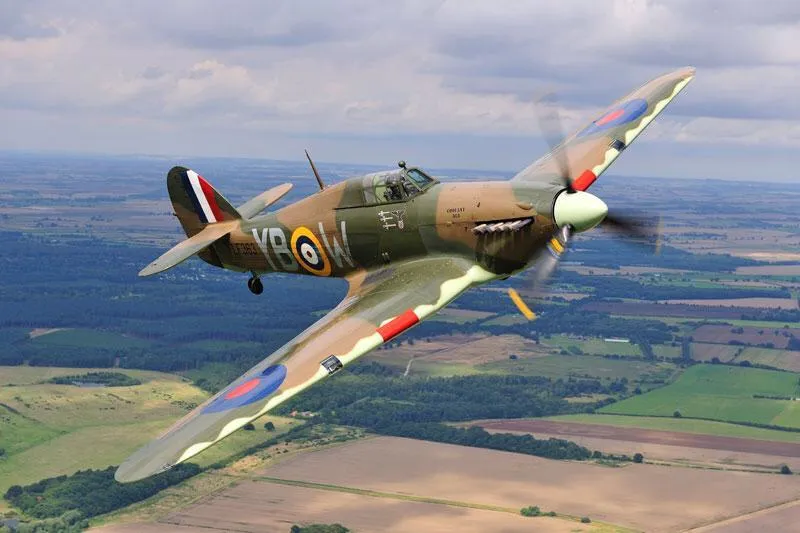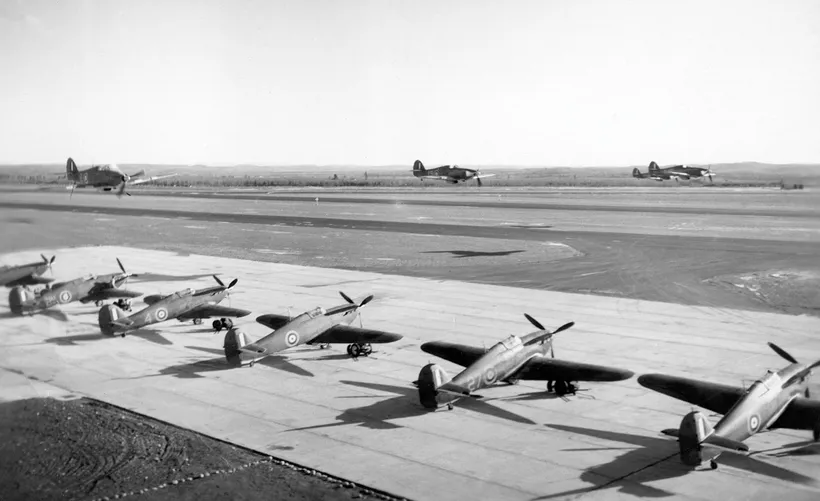Walton, Eric Egbert (Sergeant)
Killed in Flying Accident 1944-August-11


Birth Date: unkown date
Born:
Parents: WILLIAM HAROLD AND ALICE HENRIETTA WALTON, OF KEGWORTH, NOTTINGHAMSHIRE, ENGLAND
Spouse:
Home:
Enlistment:
Enlistment Date: unkown date
Service
RAF
Unit
1 OTU- Operational Training Unit
Base
Rank
Sergeant
Position
Service Numbers
1583692
Accident Card - Hawker Hurricane Mk. I / XIIA serial:1371
This accident involved 1 aircraft on 1944-August-11. Hawker Hurricane XIIA s/n 1371.
This accident involved 1 person. Walton EE
This accident had 1 fatality. Sergeant Eric Egbert Walton RAF Killed in Flying Accident service no:1583692 Hurricane 1371
Hurricane serial: 1371

Source BBMF
The Hawker Hurricane is a single-seat fighter aircraft of the 1930s"“1940s that was designed and predominantly built by Hawker Aircraft Ltd. for service with the Royal Air Force (RAF). The Hurricane developed through several versions, as bomber-interceptors, fighter-bombers, and ground support aircraft in addition to fighters. Versions designed for the Navy were popularly known as the Sea Hurricane, with modifications enabling their operation from ships. Some were converted to be used as catapult-launched convoy escorts. By the end of production in July 1944, 14,487 Hurricanes had been completed in Britain and Canada.
A major manufacturer of the Hurricane was Canadian Car and Foundry at their factory in Fort William (now Thunder Bay), Ontario. The facility's chief engineer, Elsie MacGill, became known as the "Queen of the Hurricanes". The initiative was commercially led rather than governmentally, but was endorsed by the British government; Hawker, having recognized that a major conflict was all but inevitable after the Munich Crisis of 1938, drew up preliminary plans to expand Hurricane production via a new factory in Canada. Under this plan, samples, pattern aircraft, and a complete set of design documents stored on microfilm, were shipped to Canada; the RCAF ordered 20 Hurricanes to equip one fighter squadron and two more were supplied to Canadian Car and Foundry as pattern aircraft but one probably did not arrive. The first Hurricane built at Canadian Car and Foundry was officially produced in February 1940. As a result, Canadian-built Hurricanes were shipped to Britain to participate in events such as the Battle of Britain. Canadian Car and Foundry (CCF) was responsible for the production of 1,451 Hurricanes. Wikipedia and Harold A Skaarup Web Page
Aircraft Images
Hurricane 1371
Hurricane Mk. I / XIIA 1371
Diverted from RAF contract, was RAF Mk. I AG308. Delivered to stored reserve, first issued on 30 April 1942. Category B crash on 29 June 1943 while with No. 128 (F) Squadron at Sydney, NS. The a/c was taxing in response to a readiness scramble when the engine failed. The pilot then made a wheels-up forced landing off the end of the runway into muskeg resulting in minor injuries. To No. 4 Repair Depot at Scoudouc, NB on 22 June 1943. Transferred to Canada Car & Foundry at Fort William on 6 July 1943, for conversion to Mk. XIIA. Returned to Eastern Air Command on 30 August 1943. Serving with No. 1 Operational Training Unit, RCAF Station Bagotville, Quebec when it crashed on 11 August 1944, Category A. After an engine failure, the student pilot tried to stretch the glide and land back at the aerodrome but stalled and spun in short of the runway. The pilot, Flight Sergeant (RAF) E.E. Walton who had 46 hours on Hurricanes, was killed in the crash..1942-02-11 Taken on Strength 2019-08-20
1943-June-17 Accident: 128 Squadron Loc: Aerodrome Names: Redeker
1944-April-11 Accident: 1 Operational Training Unit Loc: Aerodrome Names: Streete
1944-August-11 Accident: 1 Operational Training Unit Loc: Bagotville Names: Walton
1944-09-29 Struck off Strength Struck off, reduced to spares and produce 2019-08-20
Unit Desciption
1 OTU (1 Operational Training Unit)
The Operational Training Unit (OTU) was the last stop for aircrew trainees. They spent 8 to 14 weeks learning to fly operational aircraft (Hawker Hurricane or Fairey Swordfish, e.g.). The instructors had experience in actual operations, and often were posted to OTUs after their operational tour.